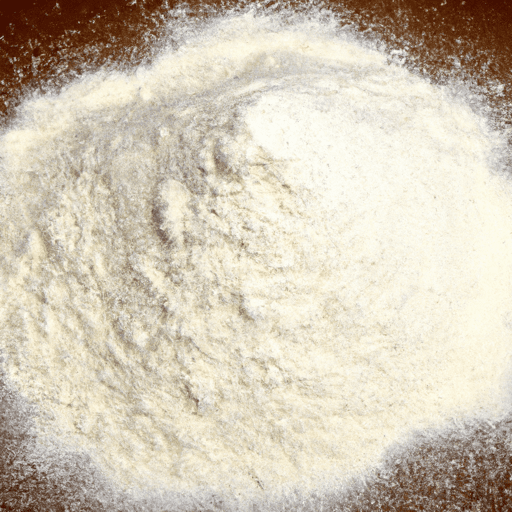Unbleached All-Purpose Flour: A Versatile Staple in the Kitchen
When it comes to baking and cooking, flour plays an indispensable role. One of the most versatile types of flour is unbleached all-purpose flour. Known for its natural characteristics and ability to deliver consistent results, unbleached all-purpose flour is a favorite among both professional chefs and home cooks. In this blog post, we will delve into the world of unbleached all-purpose flour, exploring its taste, common uses, nutritional value, and uncovering some interesting history and facts.
Taste and Texture
Unbleached all-purpose flour boasts a robust, slightly nutty flavor that lends depth to a wide range of recipes. It offers a soft and fine texture that ensures a tender crumb in baked goods, making it ideal for various sweet and savory creations. The slightly coarser texture of unbleached flour enables it to absorb liquid more effectively, resulting in better dough formation and improved gluten development.
Common Uses in Cooking
Unbleached all-purpose flour is incredibly versatile, making it a pantry essential for countless recipes. Here are some common uses:
Baking: Unbleached all-purpose flour is the go-to choice for baking cookies, cakes, pies, muffins, bread, and more. Its moderate protein content supports the formation of gluten, providing structure and elasticity to baked goods.
Batters and Coatings: This flour works wonders as a coating for fried foods such as chicken, fish, and vegetables. Its ability to create a light yet crispy texture makes it a must-have for homemade tempura or breading.
Thickening Agent: Unbleached all-purpose flour can be used to thicken sauces, gravies, and stews. Its starch content activates when heated, creating a smooth consistency that enhances flavors and improves mouthfeel.
Pasta and Noodles: You can also put this flour to use in making homemade pasta and noodles, giving them a tender yet toothsome bite that store-bought varieties often lack.
Nutritional Value
Although unbleached all-purpose flour is not a significant source of essential nutrients, it still provides some nutritional value. A quarter-cup serving of unbleached all-purpose flour typically contains:
- Calories: 110
- Protein: 4g
- Fat: 0g
- Carbohydrates: 22g
- Fiber: 1g
It’s worth noting that unbleached all-purpose flour does not contain any significant amounts of vitamins or minerals. However, it serves as a fundamental ingredient that allows you to create a wide array of tasty dishes.
Interesting History and Facts
Unbleached all-purpose flour has a rich history that dates back centuries. Here are a few intriguing facts about this staple ingredient:
Unbleached vs. Bleached: Unlike its bleached counterpart, unbleached all-purpose flour is produced without any chemical treatments. This means that it retains its natural creamy color and earthy flavor.
Old-fashioned Milling: The production of unbleached all-purpose flour involves a traditional milling process that keeps the bran and germ intact. This preserves the flour’s nutritional value and gives it a distinct texture.
Multi-purpose Convenience: The “all-purpose” aspect of this flour’s name speaks to its wide range of capabilities. This versatility makes it convenient for home cooks who may not want or need multiple specialized flours.
Preferred by Artisan Bakers: Unbleached all-purpose flour is often the flour of choice for artisan bakers due to its desirable texture, flavor, and natural attributes. It helps them achieve the perfect balance of tenderness and structure in their handcrafted bread.
In conclusion, unbleached all-purpose flour is a kitchen staple that offers endless culinary possibilities. Its robust flavor, versatility, and capacity to deliver consistent results make it a valuable ingredient in both sweet and savory recipes. Whether you use it for baking, thickening, coating, or homemade pasta, unbleached all-purpose flour is sure to elevate your culinary creations to new heights.
Unbleached All-Purpose Flour
Origin: Flour has been made for thousands of years, and its production dates back to ancient civilizations like Egypt and Mesopotamia. All-purpose flour, a versatile grain product, was developed in the early 20th century in the United States.
Common Uses: Unbleached all-purpose flour is one of the most commonly used flours in cooking and baking. Its neutral flavor and medium protein content make it suitable for a wide range of recipes, including bread, cakes, cookies, pastries, and more.
Nutritional Benefits: Unbleached all-purpose flour contains essential nutrients found in wheat. It is a good source of carbohydrates and provides small amounts of protein, dietary fiber, iron, and B vitamins such as thiamin and niacin. However, it is worth noting that the specific nutritional composition may vary depending on the brand and type of flour.
Unique Properties: Unbleached all-purpose flour is typically made from a blend of hard and soft wheat. It has a moderate protein content, usually around 10-12%, which gives dough its structure when mixed with liquid. It has a slightly off-white, creamy color due to the absence of bleaching agents.
Historical Significance: Until the early 20th century, most flour was produced using stone grinding mills, which yielded a coarser texture. The development of steel roller mills allowed for finer flour production, including all-purpose flour. The use of unbleached flour gained popularity as people sought to avoid chemical bleaching agents, leading to the production and availability of unbleached all-purpose flour on a larger scale.
Please note that some brands may have variations in their specific production processes and the composition of their unbleached all-purpose flour, so it is always advisable to refer to the packaging or manufacturer’s information for more detailed and precise specifications.




Use the share button below if you liked it.
It makes me smile, when I see it.